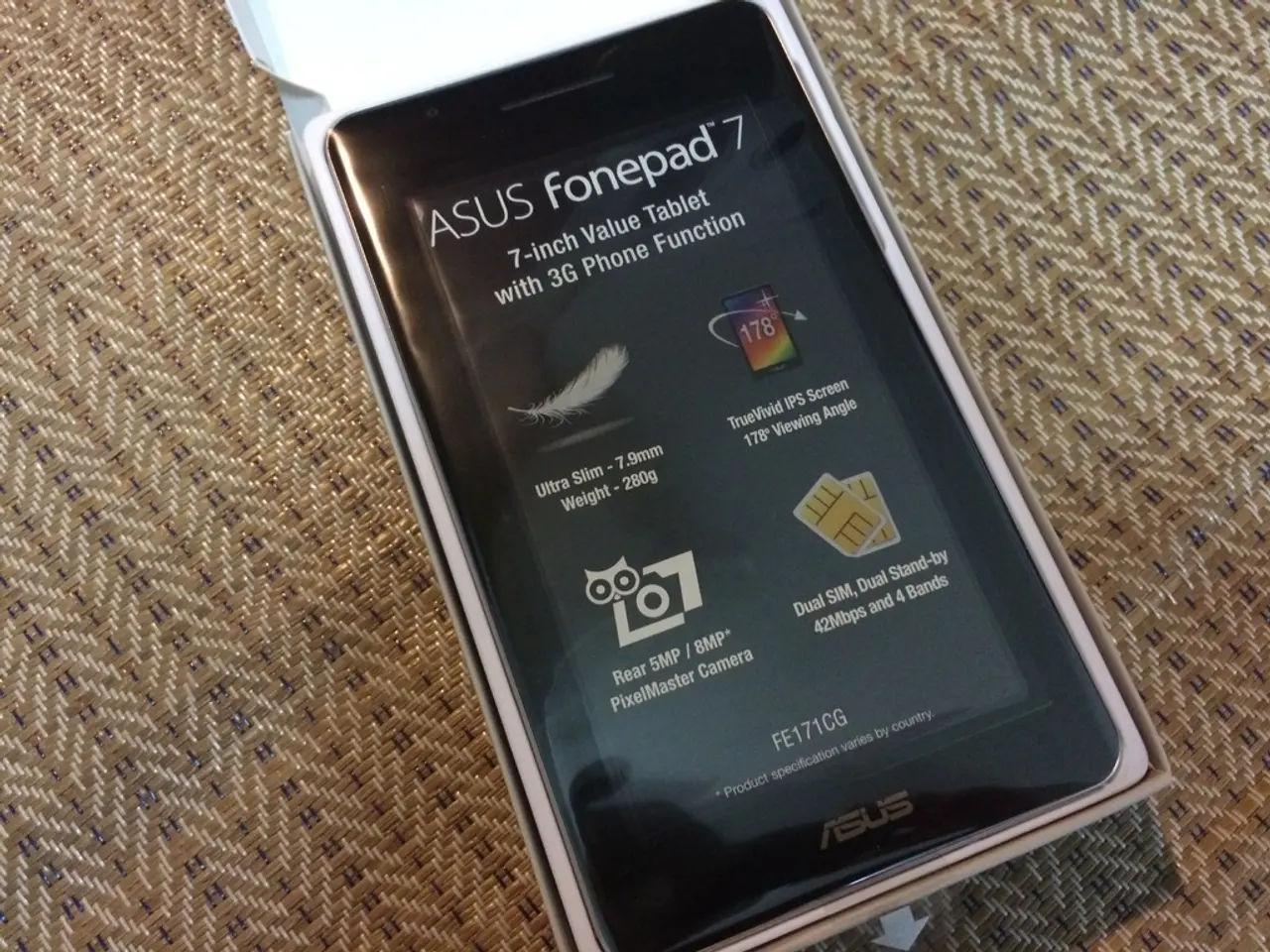Getting the Lowdown on Your Tech: EU's New Energy Label for Smartphones and Tablets
Mobile Phone Repair Efficiency: Assessing Repairability Under EU Energy Label Standards
Hello there! Ever wondered how durable your phone is, or how easy it is to repair? Well, wonder no more! As of this very moment, EU-sold smartphones and tablets come with a nifty new energy label that sheds light on the gadgets' performance, repairability, and energy efficiency, all in a manner reminiscent of washing machines or TV sets. Let's dive in!
What does the energy label signify?
The new energy label is a beauty! It provides specifics on the device's energy efficiency—ranging from A (super efficient) to G (less efficient)—and the number of hours your battery will last after a full charge, as well as the number of charge cycles the battery can endure before it only has 80% of its original capacity.
But wait, there's more! The label reveals how robust your device is against drops and the ease with which it can be repaired. It grades these aspects from A to E, with A being the most robust and easy to repair.
Additionally, the label features an IP rating, which denotes your device's protection against dust (from 0 to 6) and moisture (from 0 to 8). If you're interested, a device with an IP rating of “68” is the most protected.
Where can I find the energy label?
Glad you asked! Retailers and suppliers are legally bound to display the label close to the product, online and in stores. In Germany, the German Environmental Aid will be checking stores to make sure compliance is in order.
Does the label show the repair cost?
I'm glad you asked that too! The label doesn't specify the cost of repairs. As a spokesperson for the European consumer protection organization Beuc stated, if the device has a higher repair class, it may indicate that the gadget is easier to disassemble and parts are readily available. However, the price of parts and repair services is not part of the calculation.
Are devices also getting an upgrade?
Indeed they are! Alongside the energy label, manufacturers are required to adhere to eco-design principles. This means smarter and more resistant devices with prolonged battery life. They are also obliged to offer essential spare parts like displays, batteries, and camera modules within five to ten working days for seven years following the purchase and to provide software updates for at least five years.
The aim of these changes?
The European Commission hopes the energy label will help consumers make informed, sustainable choices before purchasing a device. The new requirements are expected to save large amounts of CO2 and electricity.
The consumer protection organization Beuc welcomes the abundance of information on the label: "The energy label can assist consumers in discovering the most powerful products.” Praise also came from Katarina Barley, Vice-President of the EU Parliament (SPD): "Now consumers no longer need to guess if their new smartphone will meet its maker at the first defect. This brings clarity, saves money, and is a significant stride toward sustainability in daily life."
The Chair of the Internal Market Committee in the EU Parliament, Anna Cavazzini (Greens), considers the new regulations a triumph. "We're finally moving towards a circular economy—and it's high time, given the EU's massive resource consumption," she said. "This turns sustainability into a norm at the checkout counter.” She also urged the Commission to develop guidelines for more product categories.
The German Environmental Aid (DUH) applauds the shift but encouraged the guidelines to extend to all electronic devices. "The new regulations for smartphones and the like are an essential step towards greener products and impeccable consumer information," said DUH Federal Managing Director Barbara Metz. "But what about all the other electronic devices? Waste from quickly disposable and repair-resistant devices has been on the rise year after year."
Will the energy label also cover laptops? You bet! According to the Fraunhofer Institute for Reliability and Microintegration in Berlin, which played a part in the development of the energy label, comparative labels for laptops are in the works, arriving in 2028.
Sources:- [1] European Commission- [2] German Environmental Aid (DUH)- [3] European Consumer Organisation (BEUC)- [4] Fraunhofer Institute for Reliability and Microintegration- [5] European Union EPREL database
The energy label for smartphones and tablets in the EU now includes details about the device's repairability and robustness, in addition to energy efficiency and battery life, providing a comprehensive guide for consumers. Furthermore, manufacturers are required to follow eco-design principles, aiming to produce smarter, more resistant devices with longer battery life and easier access to essential spare parts.






